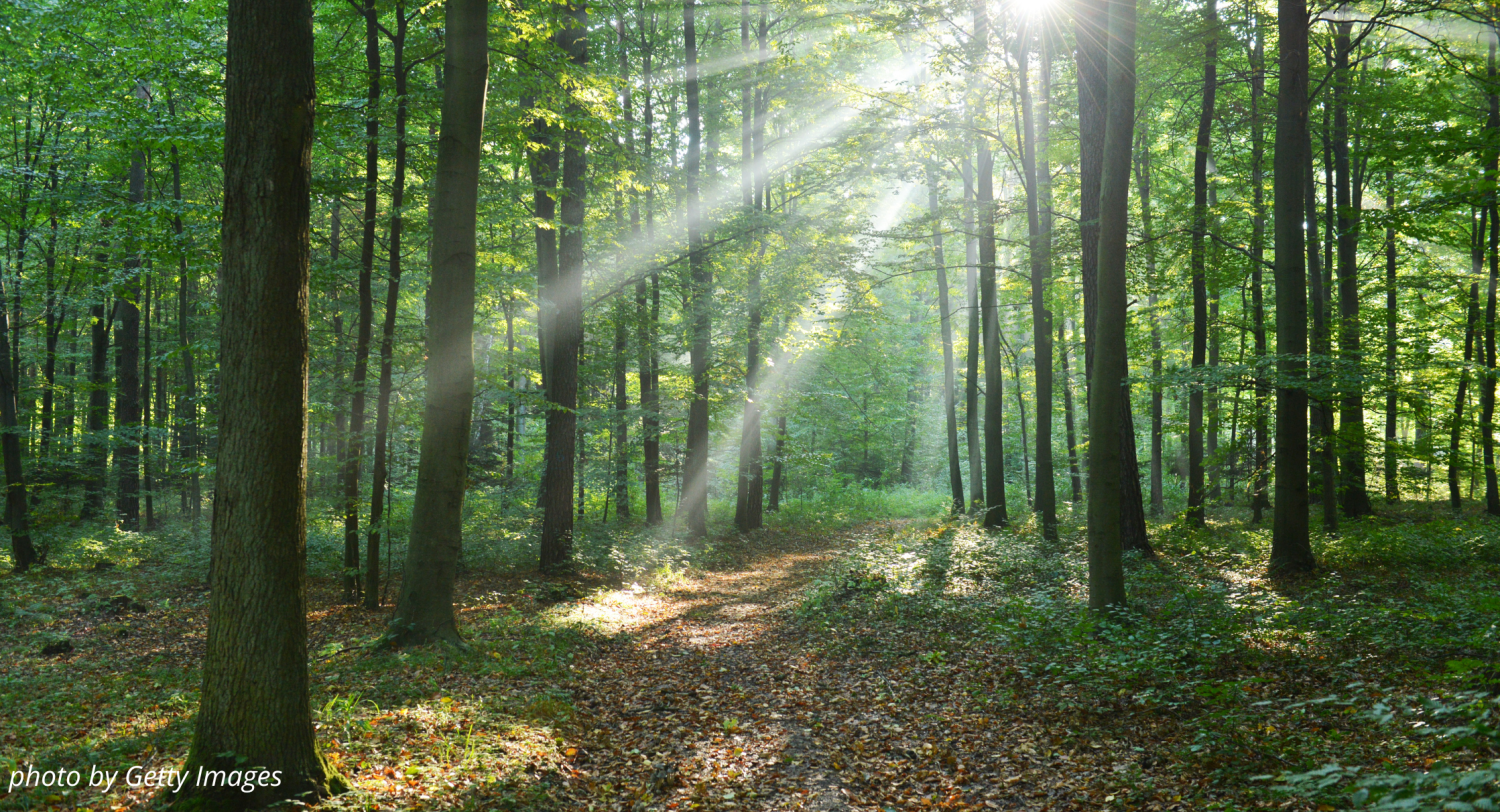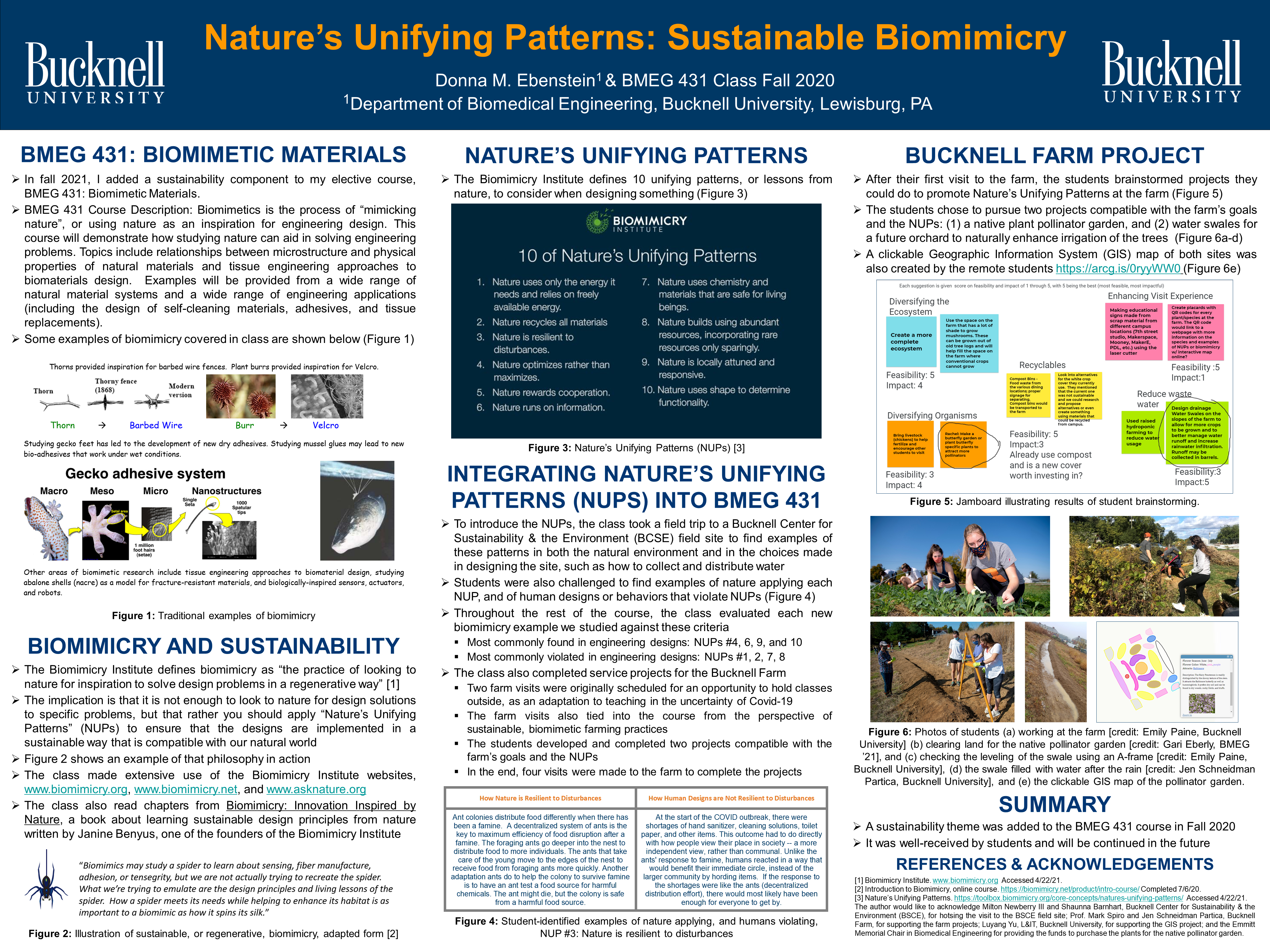Author:
Donna EbensteinCo-Authors:
Institution:
Bucknell UniversityAbstract
In fall 2020, I added a sustainability component to my elective course, BMEG 431: Biomimetic Materials. The Biomimicry Institute (biomimicry.org) defines biomimicry as “the practice of looking to nature for inspiration to solve design problems in a regenerative way.” The implication is that it is not enough to look to nature for design solutions to specific problems, but that rather you should apply “Nature’s Unifying Patterns” to ensure that the designs are implemented in a sustainable way that is compatible with our natural world. According to this site (https://toolbox.biomimicry.org/core-concepts/natures-unifying-patterns/), Nature:
• uses only the energy it needs and relies on freely available energy,
• recycles all materials,
• is resilient to disturbances,
• tends to optimize rather than maximize,
• provides mutual benefits,
• runs on information,
• uses chemistry and materials that are safe for living beings,
• builds using abundant resources, incorporating rare resources only sparingly,
• is locally attuned and responsive, and
• uses shape to determine functionality.
To introduce these patterns, we took a field trip to a Bucknell Center for Sustainability & the Environment (BCSE) field site to find examples of these patterns in both the natural environment and in the choices made in designing the site, such as how to collect and distribute water. Throughout the rest of the course, we evaluated each new biomimicry example we studied against these criteria. Finally, the class did a service project with the Bucknell Farm. After visiting the farm, the students brainstormed projects they could do to promote Nature’s Unifying Patterns at the farm. They came up with two projects compatible with the Farm’s goals and Nature’s Unifying Patterns: (1) a native plant pollinator garden, and (2) water swales for a future orchard to naturally enhance irrigation of the trees. A clickable map of both sites was also created by the remote students. Both projects were completed by the end of the semester.

